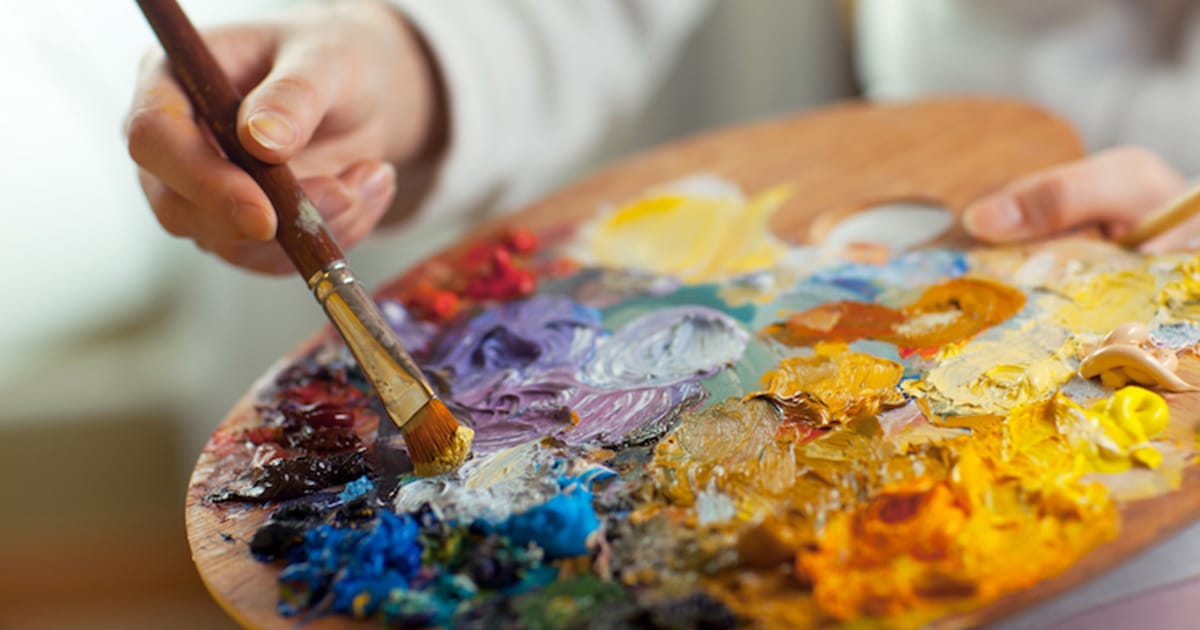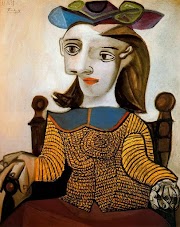Image credit: My modern met
Types of painting mediums
Painting is a form of visual art that is created using various mediums namely oil, watercolor, acrylic, or tempera paints. Painting has been around for many centuries and it has evolved over time, resulting in different styles, mediums, subjects and techniques. Let’s first discuss nine different mediums of painting.
1. Oil Painting
Oil painting is a classic form of painting that includes using oil-based paints on a canvas or wooden panel. This type of painting is well known for its rich and vibrant colors and the ability to create texture and depth in the artwork. Oil paints are very slow-drying that allows artists to work on a painting for an extended period of time.
Watercolor painting involves using water-soluble pigments on paper or other surfaces. This type of painting is well known for its transparency and delicate brushstrokes. Watercolor paints are super quick-drying, which requires artists to work quickly to achieve the desired effect.
Acrylic painting is similar to oil painting, but it uses acrylic paints that are water-soluble and dry quickly especially in comparison to oil paints. This type of painting is very versatile and can be used on a variety of surfaces, such as canvas, paper, or wood. Acrylic paints are known for their bright and vivid colors. These colors are a quite famous medium for most of the artists.
4. Tempera Painting
Tempera painting involves using pigments mixed with a water-soluble binder, such as egg yolk or glue, on a wooden panel or canvas. This type of painting was popular during the Middle Ages and during the Renaissance including early Renaissance and High-Renaissance. Tempera paints dry quickly and create a flat, matte surface.
5. Encaustic Painting
Encaustic painting is a unique form of painting that involves using hot wax mixed with pigments. The wax is applied to a wooden panel or canvas, and then the artist uses heat to manipulate the wax and create different textures and effects. Encaustic paintings have a luminous quality and can have a range of surface textures.
6. Fresco Painting
Fresco painting is a technique that involves applying pigments to wet plaster on a wall or ceiling. This type of painting was popular during the Renaissance and was used to create large-scale murals. Fresco paintings are known for their durability and vivid colors.
7. Spray Painting
Spray painting involves using a spray gun to apply paint to a surface. This type of painting is often used for graffiti or street art, but it can also be used for fine art. Spray painting allows the artist for a quick and efficient application of paint, and artists can create a range of effects with different spray nozzles.
Digital painting is a form of painting that is done using digital tools, such as a tablet or computer. Artists use software programs to create digital paintings, which can then be printed or displayed on a screen. Digital painting allows for precise control and the ability to undo mistakes. These days digital paintings are getting quite popular.
Gouache painting is similar to watercolor painting, but it uses a thicker paint that is opaque and can be used on a variety of surfaces. Gouache paints dry quickly and create a matte finish. This type of painting is often used for illustrations, cartoons, and posters.
Also see: Types of Painting Media “Site Map”
Types of painting styles
Over a long period of time, different painting styles have emerged, each with its unique characteristics and techniques. Listed below are 10 different types of painting styles.
1. Realism
Realism is a style that aims to represent the subject matter accurately and truthfully. Artists use precise details and techniques to create an image that closely resembles reality. The focus is on portraying things as they are, without any embellishments.
Impressionism is a style that emerged in the late 19th century in France. The artists aimed to capture the essence of a scene, rather than the details. They used bold, bright colors, short brushstrokes, and focused on the play of light and shadow. In these paintings the essence of the painting is of utmost importance.
3. Abstract
Abstract painting is a style that uses shapes, colors, and forms to represent an idea or emotion. In this kind of paintingd, there is no attempt to create a recognizable image, and the focus is on the interplay of colors and shapes.
4. Expressionism
Expressionism is a style that aims to convey emotion and feeling through art, thus the name. The artists use bold colors, distorted shapes, and exaggerated forms to create an image that evokes an emotional response in the viewer.
5. Surrealism
Surrealism is a style that emerged nearly in the early 20th century. In this form of art, the artists aimed to create art that was dreamlike and fantastical, often featuring strange and unexpected combinations of objects.
6. Cubism
Cubism is a style that emerged in the early 20th century by artist like Pablo Picasso, and it focuses on breaking down objects into geometric shapes. The artists aimed to represent objects from multiple viewpoints, and the result is a fragmented image that challenges traditional ideas of perspective.
7. Pop Art
Pop Art emerged in the 1950s and 60s in countries like United States and the United Kingdom. The artists aimed to incorporate popular culture into their art, using everyday objects, advertisements, and comic books as inspiration.
8. Photorealism
Photorealism is a style that emerged in the late 1960s and aims to create an image that is indistinguishable from a photograph. Thus in this kind of art, the distinction between a photo and painting becomes quite difficult. The artists uses techniques such as airbrushing and precise brushwork to create an image that is incredibly detailed and lifelike.
9. Minimalism
Minimalism is a style that emerged in the 1960s and focuses on the use of simple geometric shapes, such as squares and circles. The artists aim to create a sense of purity and simplicity in their art, using minimal elements to convey meaning.
Pointillism painting is a style of paintings that involves the use of small dots of color to create a larger image image. The dots are placed close together to create the illusion of depth and form. Pointillist paintings often have a shimmering quality and are known for the bright colors. This art form was developed by artists Paul Signac and Georges Seurat.
Types of painting subjects
Let’sl explore the different types of painting subjects.
Landscape paintings depict natural scenery such as mountains, oceans, forests, and fields, basically all natural things. These paintings can be realistic or abstract and are often created en plein air or outdoors.
2. Portrait Painting
Portrait paintings are a form of art that depicts a person or group of people. Portrait paintings can be formal or informal and can be commissioned or created for personal reasons.
3. Still Life Painting
Still life paintings depict inanimate objects such as flowers, fruits, and household items. These paintings often include a symbolic meaning or narrative, such as a vase of flowers representing the passage of time.
Historical paintings depict important historical events or figures. These paintings can be realistic or stylized and can be used to tell a story or convey a message.
5. Abstract Painting
Abstract paintings are a form of art that does not represent objects in the physical world. These paintings use color, shape, and texture to convey emotions and ideas. Emotions and ideas are the essence of these paintings.
6. Genre Painting
Genre paintings depict scenes of everyday life such as people at work, leisure, or domestic activities. These paintings often have a narrative quality and can be realistic or stylized.
Animal paintings shows, depicts or showcases animals in a realistic and stylized way. These paintings can be used to convey a message or reflect the artist's love for animals.
Fantasy paintings depict imaginary worlds, creatures, things and events. These paintings often have a narrative quality and can be used to convey a message or tell a story.
9. Religious Painting
Religious paintings depict religious themes such as biblical stories, saints, and religious figures. These paintings are often used for devotional purposes or to tell a story based on religion.
In conclusion, painting is a diverse art form that offers a range of subjects, mediums, types and styles. Whether it's landscapes, portraits, or abstracts, each painting reflects the artist's interpretation of the world around them by using different painting mediums like oils, acrylics, fresco or spray paint. By exploring the different types of painting mediums, styles and subjects, we can gain a deeper appreciation for the diversity and beauty of this art form.
Also see:



















0 Comments